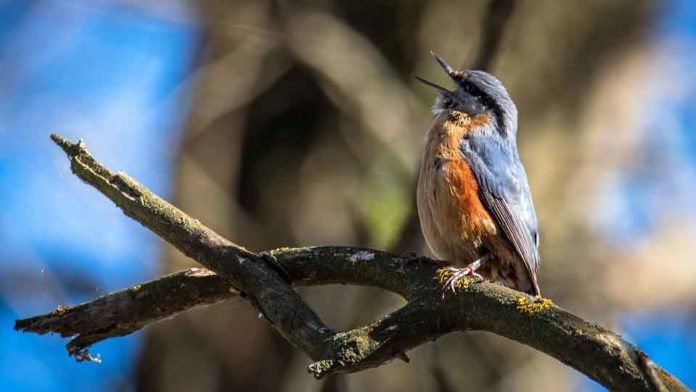Forests are a natural environment often used for such activities as jogging, hiking, dog walking, mountain biking, or horse riding. The mere presence of people in forests can disturb wildlife, which may perceive humans as potential predators. Many of these activities rely on trails, which intersect an otherwise contiguous habitat and hence impact wildlife habitat.
In a new study, scientists wanted to separate the effect of the change in vegetation and habitat structure through trails, from the effect of human presence using these trails, on forest bird communities. This is the first study to unravel the impact of forest trails from the nearness of people demonstrates the number of birds, and additionally, bird species is brought down when trails are utilized on a more normal premise.
The outcomes suggest that the physical presence of trails has less of an effect on forest birds than how as often as possible these recreational ways are utilized by individuals. To limit the effect on these forest creatures, individuals ought to abstain from wandering from assigned pathways.
Dr Yves Bötsch, lead author of this study said, “We show that forest birds are quite distinctly affected by people and that this avoidance behavior did not disappear even after years of use by humans. This suggests not all birds habituate to humans and that a long-lasting effect remains. This is important to show because pressure on natural habitats and nature protection areas is getting stronger and access bans are often ignored.”
For the study, scientists visited four forests with a comparative environment, for example, the kinds of trees, yet which varied in the levels of diversion. They recorded all winged creatures heard and seen at points close to the trails, and in addition inside the backwoods itself, and discovered that a lower number of fowls were recorded in the forests utilized all the more much of the time by people. Likewise, they saw certain species were more influenced than others.
Bötsch said, “Species with a high sensitivity, measured by flight initiation distance (the distance at which a bird exposed to an approaching human flies away), showed stronger trail avoidance, even in rarely frequented forests. These sensitive species were raptors, such as the common buzzard and Eurasian sparrowhawk, as well as pigeons and woodpeckers.”
“Generally it is assumed that hiking in nature does not harm wildlife. But our study shows even in forests that have been used recreationally for decades, birds have not habituated to people enough to outweigh the negative impact of human disturbance.”
“We believe protected areas with forbidden access are necessary and important, and that new trails into remote forest areas should not be promoted. Visitors to existing forest trails should be encouraged to adhere to a “stay on trail” rule and refrain from roaming from designated pathways.”
The study is published in the journal Frontiers in Ecology and Evolution.
